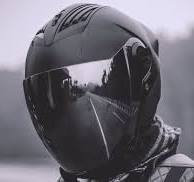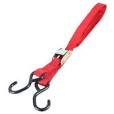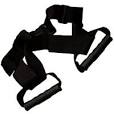Elevate Your Maintenance: The Advantages of a Motorcycle Hoist
The Benefits of Using a Motorcycle Hoist
Riding a motorcycle is an exhilarating experience, but when it comes to maintenance and repairs, having the right tools can make all the difference. One essential tool that every motorcycle enthusiast should consider investing in is a motorcycle hoist.
A motorcycle hoist, also known as a lift table or bike lift, is a piece of equipment designed to raise motorcycles off the ground for easy access to various parts of the bike. Whether you are performing routine maintenance tasks, changing oil, adjusting brakes, or working on the exhaust system, a motorcycle hoist can significantly simplify the process.
One of the main benefits of using a motorcycle hoist is improved accessibility. By lifting your bike to a comfortable working height, you can avoid straining your back and neck while working on your motorcycle. This not only enhances safety but also allows for greater precision and efficiency in your maintenance tasks.
Furthermore, a motorcycle hoist provides stability and security during maintenance procedures. With the bike securely lifted off the ground, you can work with confidence knowing that your motorcycle is in a stable position. This reduces the risk of accidents and damage to your bike.
Another advantage of using a motorcycle hoist is space efficiency. By lifting your bike vertically, you can free up valuable floor space in your garage or workshop. This allows you to work more effectively and keep your workspace organised and clutter-free.
In conclusion, investing in a motorcycle hoist is not only practical but also beneficial for any motorcycle owner or enthusiast. With improved accessibility, stability, security, and space efficiency, a motorcycle hoist can enhance your maintenance experience and help you keep your bike in top condition for years to come.
Essential FAQs About Motorcycle Hoists: Understanding Functionality, Benefits, and Safety
- What is a motorcycle hoist?
- How does a motorcycle hoist work?
- What are the benefits of using a motorcycle hoist?
- What types of motorcycles can be lifted with a motorcycle hoist?
- Is it safe to use a motorcycle hoist?
- Can I use a motorcycle hoist for storage purposes?
What is a motorcycle hoist?
A motorcycle hoist, also known as a lift table or bike lift, is a specialised piece of equipment designed to elevate motorcycles off the ground for maintenance and repair purposes. It provides a stable platform for the bike to be securely raised to a comfortable working height, allowing easy access to various parts of the motorcycle. By using a motorcycle hoist, enthusiasts and mechanics can perform tasks such as routine maintenance, oil changes, brake adjustments, and exhaust system repairs with greater ease, safety, and efficiency. The hoist helps prevent strain on the body by eliminating the need to bend or crouch while working on the bike, making it an essential tool for anyone looking to maintain their motorcycle effectively.
How does a motorcycle hoist work?
A motorcycle hoist, also known as a lift table or bike lift, operates by using hydraulic or mechanical mechanisms to raise a motorcycle off the ground for maintenance and repair purposes. Typically, the motorcycle is positioned on the platform of the hoist, and then the user activates the lifting mechanism to raise the bike to a comfortable working height. The hoist securely holds the motorcycle in place, providing stability and security while allowing easy access to various parts of the bike. This makes tasks such as oil changes, brake adjustments, and general maintenance much more convenient and efficient. Overall, a motorcycle hoist simplifies the process of working on a motorcycle by providing a safe and ergonomic way to lift and support the bike during maintenance procedures.
What are the benefits of using a motorcycle hoist?
Using a motorcycle hoist offers a range of benefits that can enhance the maintenance experience for motorcycle owners. The primary advantage of using a motorcycle hoist is the improved accessibility it provides. By raising the bike to a convenient working height, users can avoid strain on their back and neck while performing maintenance tasks with greater precision and efficiency. Additionally, the stability and security offered by a motorcycle hoist ensure that the bike remains in a secure position during maintenance procedures, reducing the risk of accidents and damage. Furthermore, the space efficiency of a motorcycle hoist allows users to free up valuable floor space in their garage or workshop, promoting an organised and clutter-free workspace.
What types of motorcycles can be lifted with a motorcycle hoist?
When it comes to using a motorcycle hoist, one common question that arises is: “What types of motorcycles can be lifted with a motorcycle hoist?” Motorcycle hoists are versatile tools designed to accommodate a wide range of motorcycles, including cruisers, sport bikes, touring bikes, dirt bikes, and more. Whether you have a lightweight commuter bike or a heavy touring motorcycle, there are hoists available with varying weight capacities to suit different types of bikes. It’s essential to check the specifications of the hoist to ensure it can safely lift your specific type and weight of motorcycle for efficient and secure maintenance tasks.
Is it safe to use a motorcycle hoist?
When considering the safety of using a motorcycle hoist, it is important to note that when used correctly and following manufacturer instructions, a motorcycle hoist can be a safe and reliable tool for lifting your bike. It is crucial to ensure that the hoist is in good working condition, properly maintained, and used within its weight capacity limits. Additionally, always secure the motorcycle properly on the hoist and use appropriate safety measures such as wheel chocks and straps to prevent accidents. By adhering to safety guidelines and exercising caution, using a motorcycle hoist can provide a secure and efficient way to work on your bike without compromising safety.
Can I use a motorcycle hoist for storage purposes?
When it comes to using a motorcycle hoist for storage purposes, it is essential to consider a few key factors. While a motorcycle hoist is primarily designed for lifting bikes off the ground for maintenance and repair tasks, some models may be suitable for temporary storage. However, it is crucial to ensure that the hoist is securely locked in place and that the bike is properly supported to prevent any accidents or damage. Additionally, be mindful of weight capacity and stability to avoid any potential risks when using a motorcycle hoist for storage purposes. It’s always recommended to follow the manufacturer’s guidelines and safety instructions to ensure safe and effective use of the hoist for storage needs.





